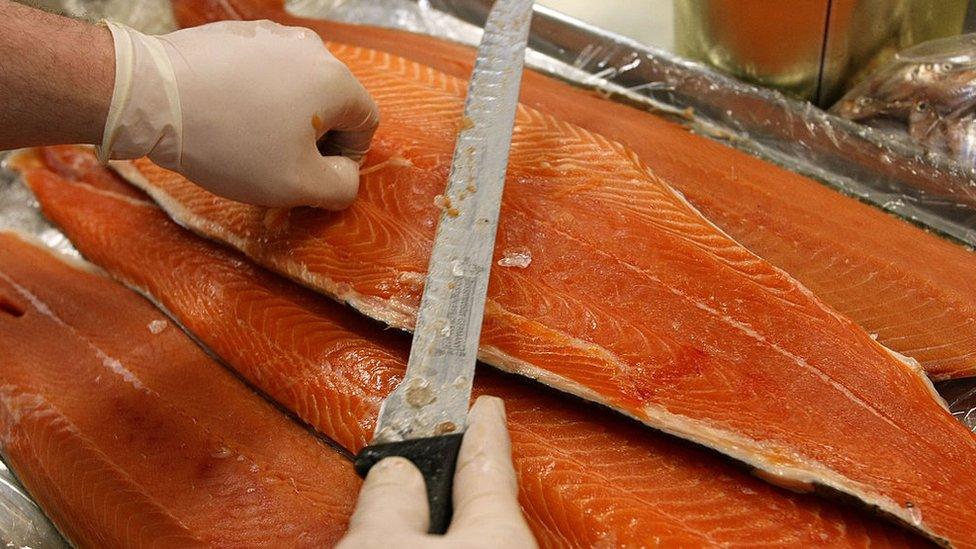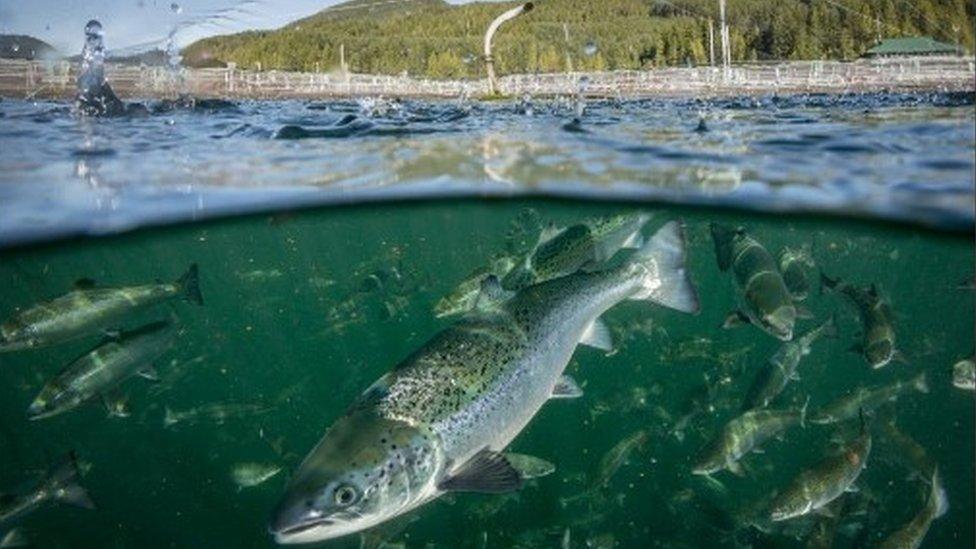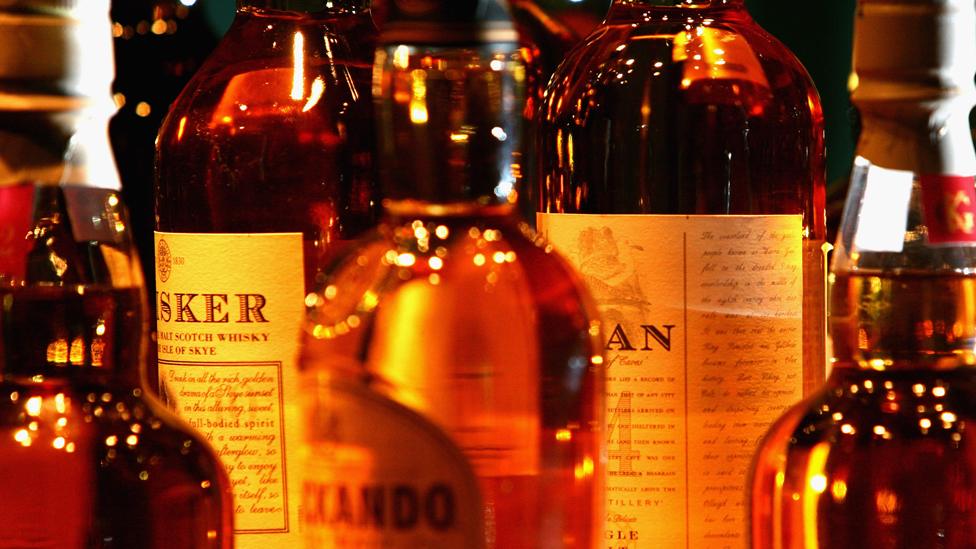Salmon producer Mowi sees profits hit by lice, disease and escapes
- Published

The biggest producer of farmed Atlantic salmon has reported a hit to earnings from lice, disease and escapes from its Scottish sea pens.
Norway-based Mowi, formerly Marine Harvest, published figures for 2019 showing its highest-ever worldwide harvest of salmon, at 436,000 tonnes.
Scottish production in the final quarter of the year - at 14,000 tonnes - was higher than expected.
That was mainly because of infestations of sea lice.
When lice take hold in a sea pen, fish farmers bring forward the age at which fish are slaughtered, meaning they fail to reach their maximum size and value.
Mowi's quarterly report stated there was an increase in "medicinal treatment" of sea lice at the end of 2019, while the company succeeded in reducing its use in Ireland, the Faroes and north Norway.
Mowi also reported significant fish mortality in Scotland due to disease, bringing a big rise in antibiotic treatment. Infections included pasteurella skyensis, against which Mowi is trying to develop a vaccine, as well as pancreas disease and cardiomyopathy syndrome.
Escape from Barra
And in October, there was an escape of 24,000 fish from a farm near the Isle of Barra, followed last month by an escape of more than 70,000 salmon in storm damage to pens near Colonsay.
With prices lower in late 2019 than the same period a year earlier, and with higher costs, pre-tax earnings per kilogram of Scottish produced fish were down by more than 40% on late 2018, as well as being significantly down on the figure for the whole year.
Meanwhile, the company reported the commissioning phase of its large new fish feed plant, at Kyleakin on the Isle of Skye, is nearing its conclusion, with production already of 23,000 tonnes.
Higher fish production tonnage from Mowi helped total Scottish salmon exports reach a record high in 2019.
Figures published on Tuesday by HM Revenue and Customs showed exports up by 26% to 94,000 tonnes, with value rising 22% to £618m.
- Published21 January 2020

- Published11 February 2020
